It’s easy to overlook custom illustration as a potential design tool, especially when working in a fast paced conservative business environment. Illustration can seem like a luxury that we’d love to have the time, money, and flexibility for – one day.
This is understandable given the resources available to us. Photography and stock imagery are generally seen as the faster and cheaper alternative, but is this the reason their use is more widespread? More likely it’s because most people have a tolerable ability (or at least have made recent attempts) at taking photos or searching for stock images, but it takes more dedication to create a meaningful image from nothing. It’s intimidating to commission it, essentially agreeing to pay for something you can’t see beforehand.
Crucially, there is a mental barrier to using illustration, where it may be felt too ‘arty’ and ‘innovative’ and therefore risky in environments where there may be little room for error or experimentation.
Illustration is not for every project, but it should be given greater consideration. Here are some reasons why:
Increasing understanding where literacy is limited

This is from a graphic novel written for prison inmates, telling them about what kinds of grievances they can file, and how to do so effectively. It’s written with an average reading level of grade 5 (the average reading level of a 10-11 year old in the USA) to remain accessible to the target audience. The artwork helps to describe the time, place, people, and progression of events with a minimum of words, thus shortening and simplifying the explanation without loss of information.
In this case the informality often associated with ‘comics’ also works in its favour. Law, which is often difficult to interpret even for practitioners, is taken to a level and delivered in a medium that feels more relevant and accessible.
See also: this legally binding contract by Jincom and Robert de Rooy.
Amplification through simplification
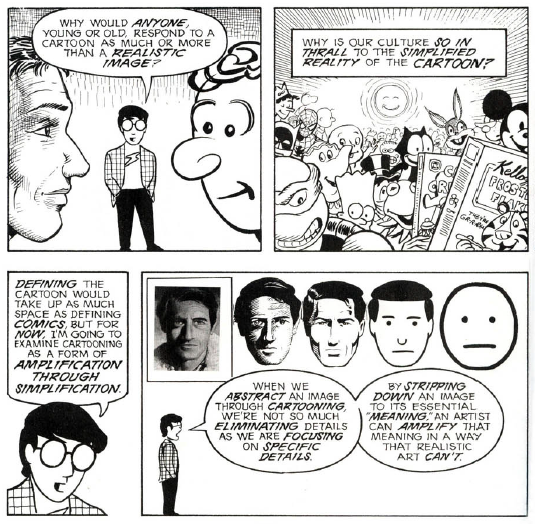
By reducing something to its most important details, we can draw more attention to it, remove ambiguity, and drive home meaning. This is the same reason we remove visual clutter in diagrams.
Explaining systems or processes
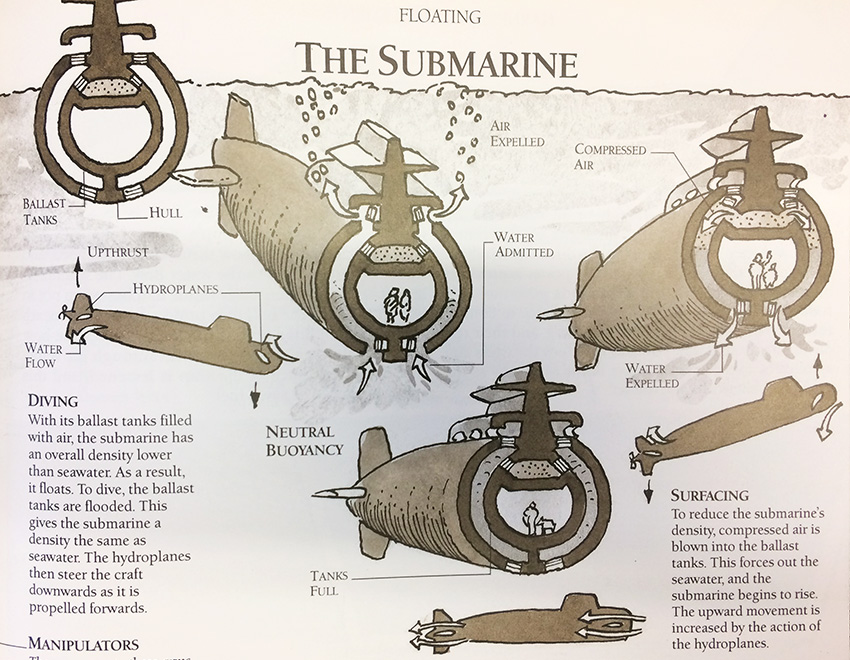
Visual elements such as scale, proportion, and colour can be manipulated more easily using illustration than with a more realistic medium like photography. The image above clearly shows the mechanism by which a submarine dives or surfaces. It does this by breaking down the system to show only the required component parts, using a cutout, emphasising the walls by increasing their relative size, and adding arrows to show movement.
Empathy
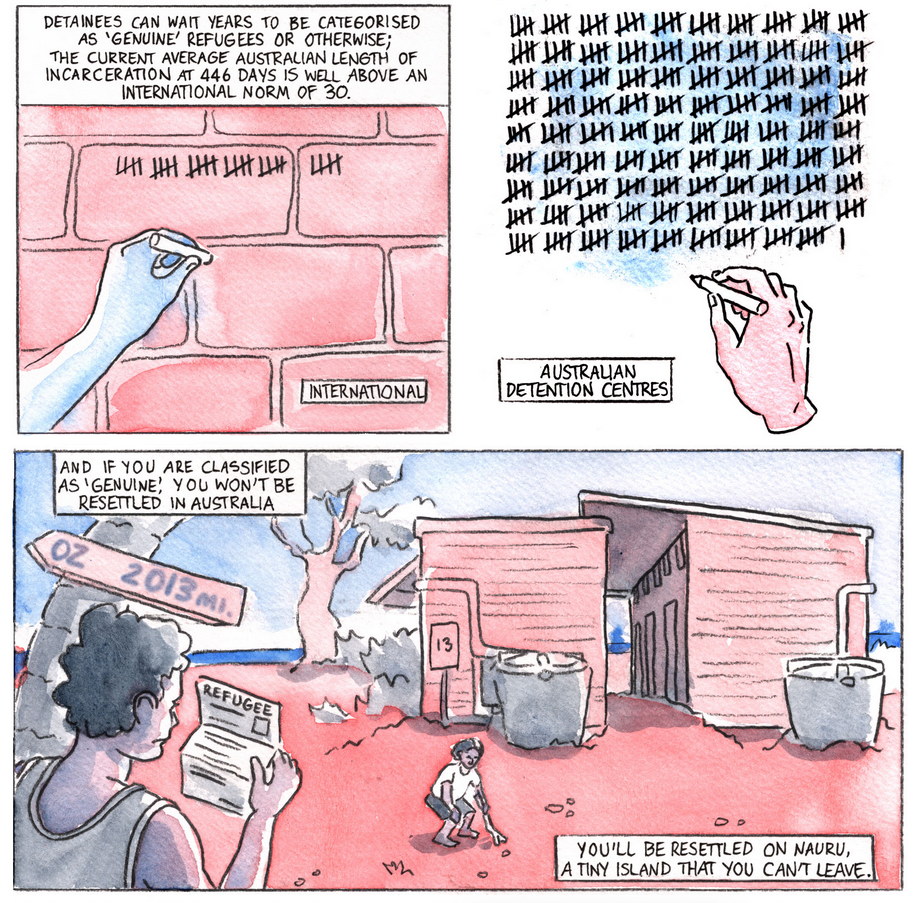
Illustration can help to bring data to life by moving information from an intellectual level onto an emotional level. This can prompt the viewer to realise the actual implications of the facts and numbers they’re reading. Empathy, in turn, encourages cooperation and generosity. This explains why illustration can be so effective as a tool for activism, where the goal is to move people into doing something. The same could be said for marketing.
For illustrated topical commentary see also: The Nib.
Showing otherwise nonvisual concepts
Custom artwork can go places where photographs can’t. It can help explain a complex concept by using metaphors. The viewer’s participation helps to complete the story and this can help with both understanding the meaning and remembering it.
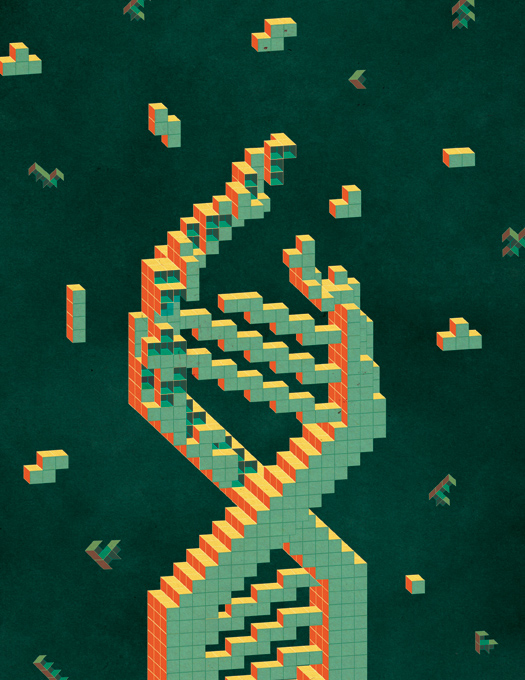
This illustration, for example, combines two images which even casual readers of the magazine’s audience will not only identify but also attach an existing set of meanings to: tetris for solving problems and fitting things together; DNA for holding the instructions that make up living organisms. Together they give the reader at a glance clues as to what this article could be about.
Showing things that don’t exist yet, or don’t exist anymore
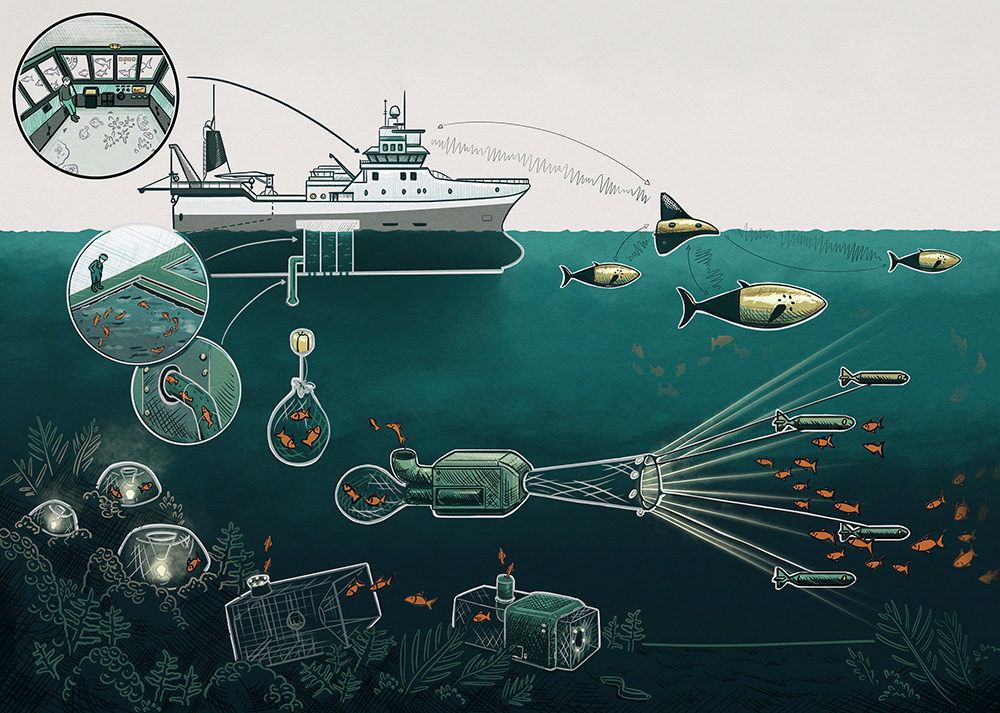
Illustration is great for looking into the past – for recreating things that no longer exist; or for proposing things that we might see for the future. In the sample above, a variety of emerging technologies are illustrated to help the reader visualise the contents of a report that proposes research into sustainable fishing. It supports written content by acting as an aide to imagination.
Storytelling
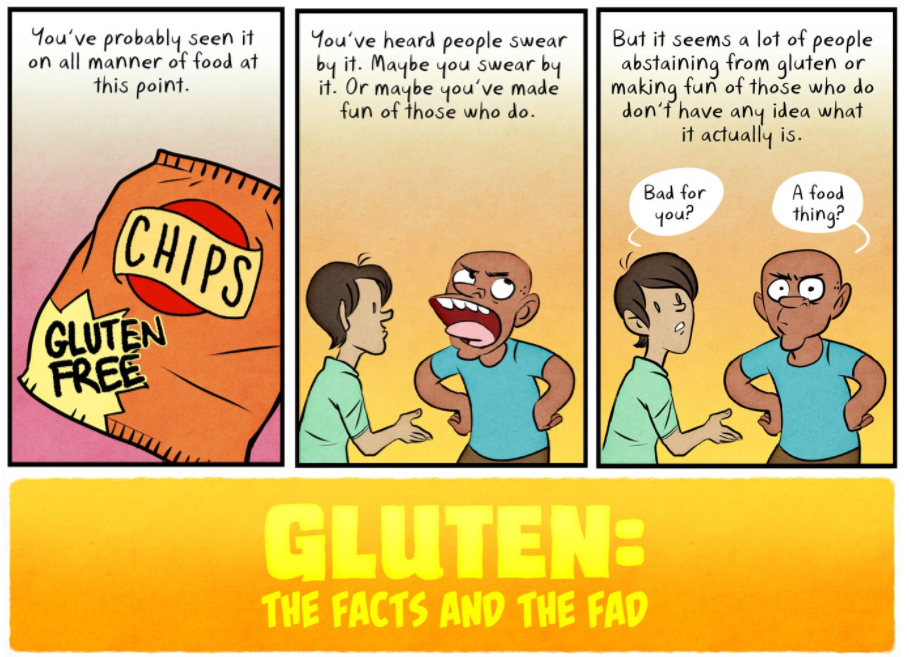
The reasons above are all connected: one facilitates the other. An overarching connection between many of these examples, and perhaps the most important point of illustration, is its natural connection with storytelling, which is easily one of the best ways to engage viewers in a meaningful and way. It’s a great tool for developing characters, setting context, and showing the way events relate to each other.
TDL and illustration
There you have it: some thought-provoking reasons to consider using illustrations in your project. Many of the examples above have intentionally been created to feel informal and friendly, to target as wide an audience as possible, including people who may otherwise not be aware of, or receptive to, the information.
TDL uses illustration in a variety of ways, such as in method statements, manuals, and user journeys. More ‘serious’ and less ‘cartoony’ is how our clients generally describe our style, as this fits better within the corporate business and government bid sector – although our team is certainly up for deviating from that! To see some samples of TDL design incorporating illustration, have a look at our Grillshack menus and Care shelter leaflets. We’ll be adding more samples over the next couple of months so remember to keep visiting!